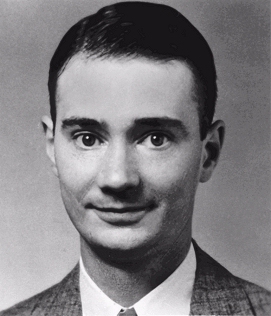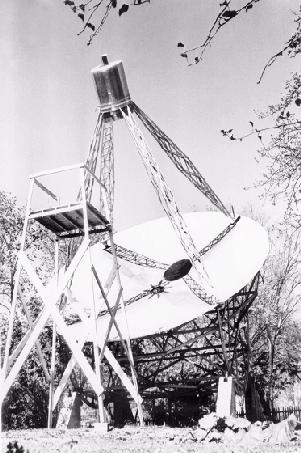The Inaugural Grote Reber medal
Figure 1: Professor W. C. Erickson. Photo courtesy: W. Erickson
The inaugural Grote Reber medal is awarded to W C Erickson, (Figure 1) Professor Emeritus at University of Maryland and Honorary Research Associate at the University of Tasmania. Professor Erickson was recognised for his innovative contributions to radio astronomy, especially for his many novel techniques which have been the forerunner of the new generation of metre-wavelength radio telescopes. Currently he operates his own private radio observatory on Bruny Island in Tasmania. Earlier in his career Erickson studied the turbulence in the solar corona, investigated the nature of fast millisecond pulsars and made one of the first detections of very high Rydberg state atoms in the cold interstellar medium. More recently, he has been leading a group of his former students doing sub-arcminute resolution imaging at metre wavelengths.
Professor Erickson was educated at the University of Minnesota and received his PhD degree in 1956. Following appointments at St. Thomas College, Minnesota, the University of Minnesota, the Carnegie Institute and the Convair Corporation, Erickson spent a year in Leiden as the leader of the group developing the Benelux Cross Radio Telescope. While at the University of Maryland from 1963 to 1988, Erickson developed a succession of innovative low-frequency radio telescopes at Clark Lake in the Anza-Borrego Desert in California. Through his students he has left a legacy of skilled scientists who are developing the new generation of metre-wavelength radio telescopes.
 Figure 2: Grote Reber as a young man. This picture is copied from "A Play Entitled the Beginning of Radio Astronomy", by Grote Reber, in The Journal of the Royal Astronomical Society of Canada, Vol.82, No.3, June 1988, page 93.
Figure 2: Grote Reber as a young man. This picture is copied from "A Play Entitled the Beginning of Radio Astronomy", by Grote Reber, in The Journal of the Royal Astronomical Society of Canada, Vol.82, No.3, June 1988, page 93.
The Grote Reber medal will be awarded annually for innovative lifetime contributions to radio astronomy. The medal is administered by the Queen Victoria Museum in Launceston in cooperation with the University of Tasmania, the ATNF and the NRAO. The 2005 prize will be awarded at a ceremony on 8 December 2005 during an international conference on radio astronomy at the University of Tasmania. The medal is to commemorate the pioneering work of Grote Reber, the first radio astronomer (Figure 2). Reber was born on 22 December 1911 in Chicago. In 1937 he built, at his own expense, the first "dish" radio telescope, the forerunner of the Parkes dish, in his back yard in Wheaton, Illinois (Figure 3).
 Figure 3: The first "dish" radio telescope. Courtesy: Estate of G Reber
Figure 3: The first "dish" radio telescope. Courtesy: Estate of G Reber
Reber made the first surveys of radio waves from the sky and published his results both in engineering and astronomy journals. His accomplishments ensured that radio astronomy became a major field of research. Astronomers in many countries began building bigger and better telescopes to follow up on Reber's pioneering discoveries.
In the 1950s, Reber turned his attention to cosmic radio waves at very low frequencies (1 – 2 MHz, or wavelength 150 – 300 metres), a field neglected by most other researchers. Waves of these frequencies cannot penetrate the Earth's ionosphere except in certain locations at times of low solar activity. To this end he moved to Tasmania, where he lived for many years. There he produced the first sky map at 2 MHz which was made with his square-kilometre array at Bothwell north of Hobart (Figure 4), which is the only square-kilometre array built so far! He died in Tasmania on 20 December 2002.
The award of the Grote Reber medal is made possible through funds provided by the Estate of Grote Reber.
 Figure 4: Grote Reber's square-kilometre
Figure 4: Grote Reber's square-kilometre
array at Bothwell, Tasmania. Courtesy: Estate of G Reber
Dave Jauncey
(Dave.Jauncey@csiro.au)
